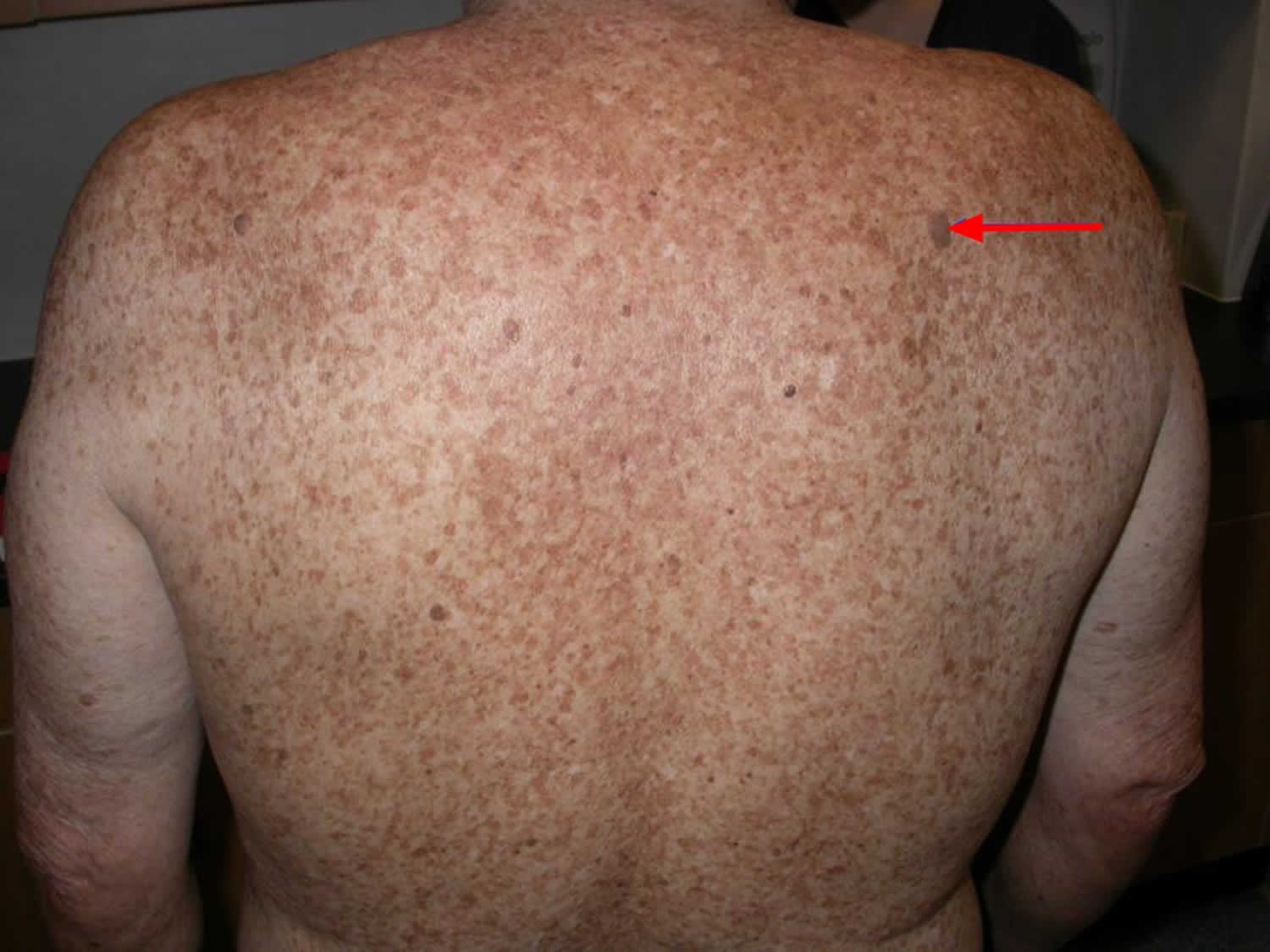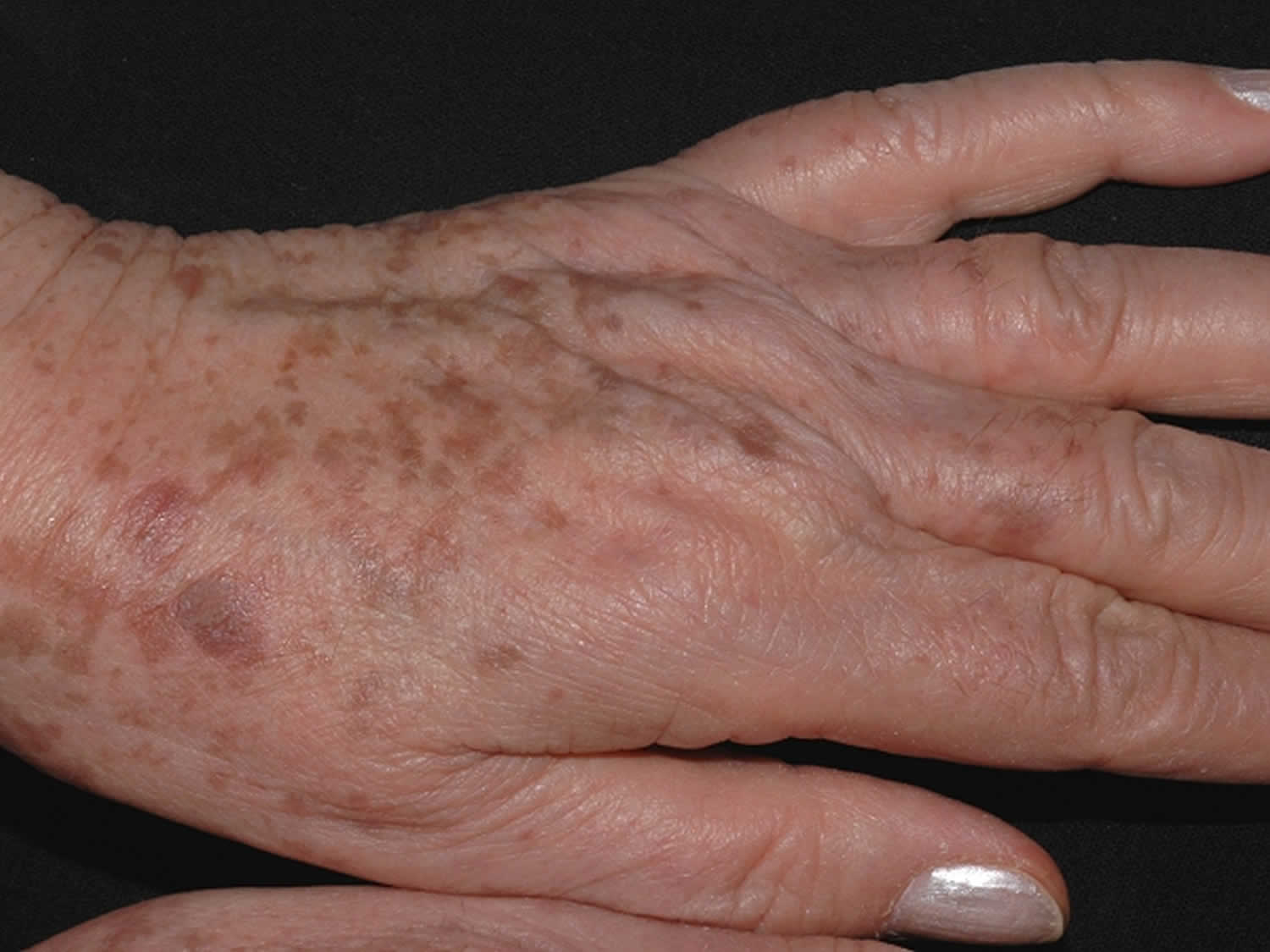Solar lentigo
Solar lentigo also known as an “old age spot”, “liver spots” or “senile freckle”, is a harmless patch of darkened skin. Solar lentigo results from exposure to ultraviolet (UV) radiation, which causes local proliferation of melanocytes and accumulation of melanin within the skin cells (keratinocytes). Solar lentigos or lentigines are very common, especially in people over the age of 40 years. A lentigo (lentigine), unlike a freckle (ephilis) maintains its pigmentation throughout the year. The increase in melanin is often associated with an increase of normal melanocytes at the dermal-epidermal junction.
Seborrheic keratoses may arise within solar lentigines. This results in localized thickening and change in texture within the solar lentigo.
Solar lentigines may become inflamed, when they are called lichenoid keratosis or lichen-planus like keratosis (due to the pattern of inflammation seen on histopathology). Lichenoid keratosis gradually disappear.
If solar lentigines are cosmetically bothersome, your physician may:
- Freeze the area lightly with liquid nitrogen.
- Prescribe a bleaching cream (hydroquinone), but this is often not successful.
Solar lentigines do not require medical therapy, but see a physician for evaluation if they become cosmetically bothersome or if you are uncertain about any pigmented spot on your body.
Figure 1. Solar lentigo
Figure 2. Solar lentigines
Footnote: This patient worked outdoors for many years without protection and his mum used to put cooking oil on his back. The red arrow denotes a seborrheic keratosis
Figure 3. Solar lentigines on backs of hands
Solar lentigo causes
Solar lentigines most commonly occur in older adults, particularly those who sunburn easily and fail to tan, but they may also occur in children.
Solar lentigines typically appear on areas exposed to natural or artificial UV light. They appear as well-defined, light brown to black, flat spots. In people who have been treated with a form of UV light therapy called PUVA, solar lentigines may occur in areas of the skin not exposed to UV light.
Solar lentigo prevention
To prevent solar lentigines, avoid exposure to sunlight in midday (10 AM to 3 PM), wear sun-protective clothing (tightly woven clothes and hats), and apply sunscreen (SPF 30 UVA and UVB block).
Solar lentigo symptoms
A solar lentigo is a flat, well-circumscribed patch. It can be round, oval or irregular in shape. Color varies from skin-colored, tan to dark brown or black, and size varies from a few millimeters to several centimeters in diameter. They can be slightly scaly.
Solar lentigines are found as groups of similar lesions on sun-exposed sites, particularly the face or the back of hands. They occur in light and dark skin, but tend to be more numerous in fair-skinned individuals.
Solar lentigo diagnosis
Solar lentigo is often diagnosed on its clinical appearance. On occasion, it can be difficult to differentiate an irregular solar lentigo from melanoma, a potentially dangerous form of skin cancer, and the term atypical solar lentigo may be used.
Examination using dermatoscopy can clarify the diagnosis. If there is still diagnostic doubt, a skin biopsy may be performed for histological examination.
Solar lentigo treatment
If left untreated, solar lentigo will most likely persist indefinitely. Cryotherapy and laser surgery can destroy them, but treatment may leave a temporary or permanent white or dark mark.
Bleaching agents such as hydroquinone are not effective.
Preventative measures include minimizing sun exposure and use of sunscreens, but this needs to start early in life.


